Gacrux is the nearest class M giant star to the Sun. It is the third brightest star in the constellation of Crux, and the 25th brightest star in the night sky.
Key Facts & Summary
- Gacrux, unlike its blue star neighbors, is a red giant star situated at around 88.6 light-years / 27.2 parsecs away from the Sun.
- It has an apparent visual magnitude of +1.63 and an absolute magnitude of -0.52. It is also a semi-regular variable type of stars having around 6 different pulsation periods.
- Gacrux has evolved off the main sequence and became a red giant star, being classified as an M3.5 III star.
- Gacrux is only 50% more massive than our sun, with an estimated 1.5 sollar masses and dues to its current stage, it has expanded exponentially having a radius around 84 times that of the Sun.
- Gacrux is much cooler than our sun, having an estimated surface temperature of around 3.626 K.
- Gacrux is around 820 times brighter than our sun and it’s color appears to be a prominent reddish-orange.
- Though its atmosphere is enriched with barium, which is usually explained by the transfer of material from a more evolved companion star, no such star has yet been detected around Gacrux.
- Gacrux is slightly fainter than Shaula in the constellation of Scorpius, Castor in the constellation of Gemini, and it barely outshines Bellatrix in the constellation of Orion, Elnath in the constellation of Taurus, and Miaplacidus in the constellation of Carina.
- Gacrux is the brightest star of its class in the night sky, and the nearest red giant to the solar system. It is believed that Gacrux is on the red giant branch, and not the asymptotic giant branch thus it is believed that it is moving up towards a second-ascent giant branch.
- Though it is the closest of its kind towards us, Gacrux’s age is currently unknown.
- Gacrux is one of the stars that form the Southern Cross, one of the prominent asterisms in the southern celestial hemisphere. Three other stars are part of this asterism – Acrux, Mimosa, and Imai.
Many celestial names can be traced back to the Latin, Arabic, or Greek languages. When it comes to the star Gacrux, it is simply a contraction of the star’s Greek letter designation Gamma, and from “crux” which is the name of the constellation.
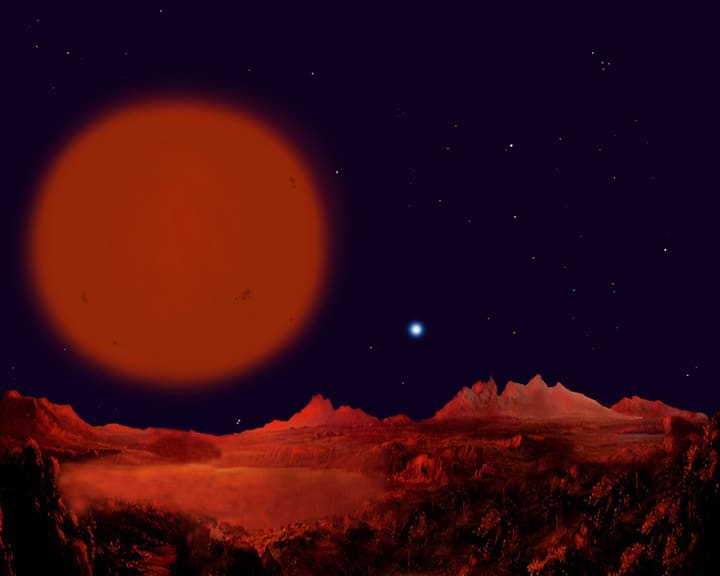
Gacrux is a name that was coined in the 19th century by a celestial cartographer named Elijah. Little if any mythology is associated with this star and constellation. Observers frequently point out that the constellation is not shaped like a Christian cross and that it is merely an exaggeration.
Despite this, many countries love the Southern Cross asterism and the constellation is frequently used as a symbol on the flags of several nations in the Southern Hemisphere.
Formation
Gacrux’s age and origin are currently unknown to us. The star formed out of gas and dust pulled together by gravity. The primordial materials may have resulted in the giant star’s current stage or it may have naturally arrived at this point in its lifetime. Future studies are aimed at finding out more about Gacrux, and once its age is speculated, it will reveal to us more information on the star’s formation.
Distance, Size, and Mass
Gacrux is the closest red giant star near the solar system, situated at around 88.6 light-years / 27.2 parsecs away from the Sun. Gacrux is only 50% more massive than our sun.
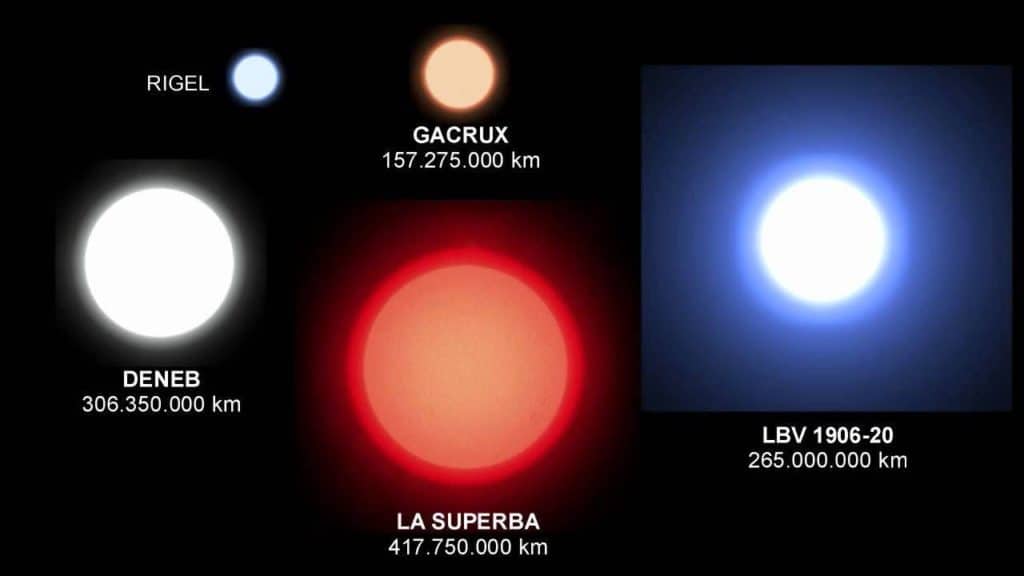
It has an estimated 1.5 sollar masses and dues to its current stage, it has expanded exponentially having a radius of around 84 times that of the Sun.
Other Characteristics
Gacrux is much cooler than our sun, having an estimated surface temperature of around 3.626 K. This star is around 820 times brighter than our sun and it’s color appears to be a prominent reddish-orange. It has an apparent visual magnitude of +1.63 and an absolute magnitude of -0.52. It is also a semi-regular variable type of stars having around 6 different pulsation periods.
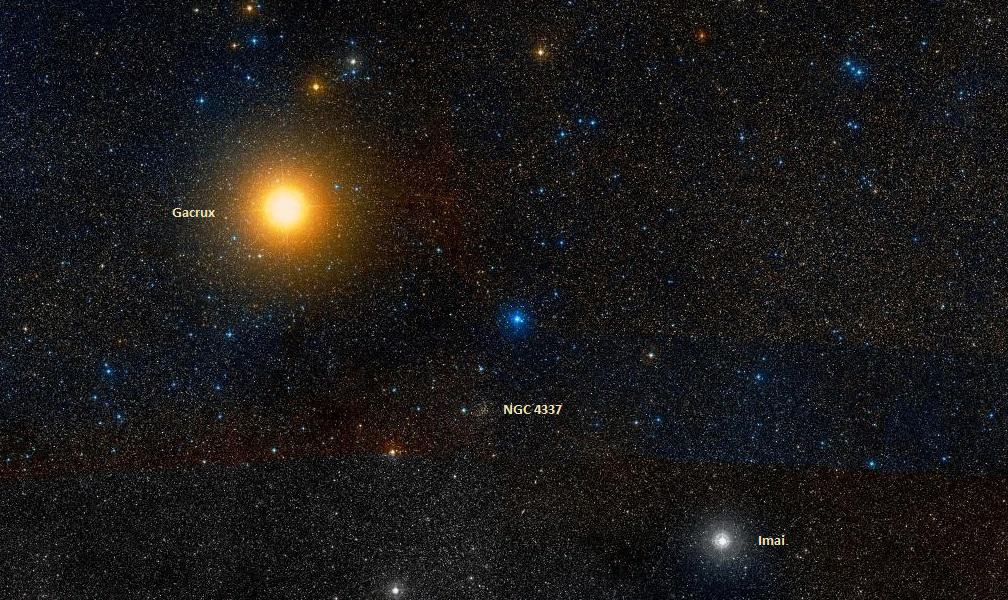
These pulsations periods range from 12.1 to 104.9 days and its amplitude changes from 0.015 to 0.027 magnitudes. Its atmosphere is enriched in barium, something that we know only happens when mass is transferred from a star to another.
Finding this elusive white dwarf that may be responsible for such a characteristic has been proven unsuccessful to this day. It is believed that Gacrux is on the red giant branch, and not the asymptotic giant branch thus it is believed that it is moving up towards a second-ascent giant branch.
Location
Gacrux is located in the constellation of Crux. It is surrounded by blue stars. The constellation of Crux is the smallest out of the 88 constellations.
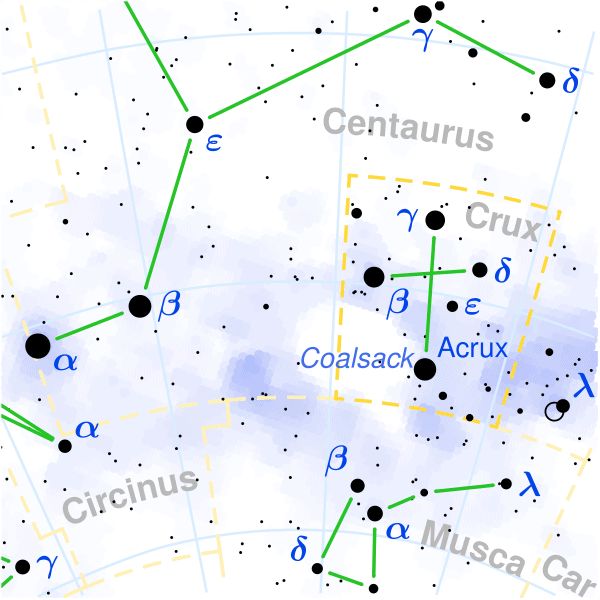
The star is invisible for most of the northern hemisphere observers. For those in the south, Gacrux is part of the Southern Cross asterism – a pair of very bright stars. Alpha and Beta Centauri is also known as the Southern Pointers – are actually pointing towards this asterism.
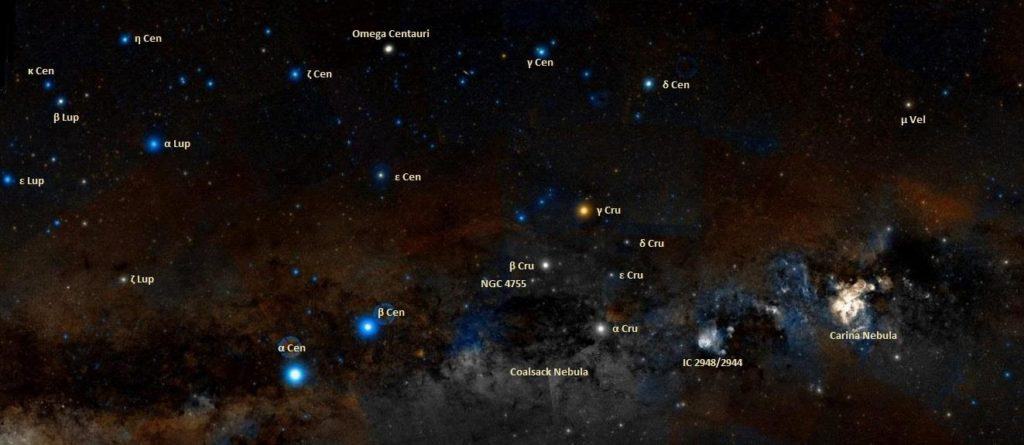
The stars of this asterism are circumpolar – never sinking below the horizon. They are visible for southern observers thorugh most of the year but the best time to see the constellation and its components is during the month of May in the evening.
Oftern, Gacrux, Acrux, and the Southern Pointers are used to find the south celestial pole.
The Future
Gacrux is very big, though its mass in comparison is very low. Because of this, it is believed that the star will end its life in the near future. It will eject its outer gas envelope into space to form a planetary nebula, leaving behind an almost planet-sized white dwarf that will eventually fade.
Did you know?
- Gacrux can be used to find one of the older globular clusters in the Milky Way’s inner disk. It is designated NGC 4337, and it is located in the region between Gacrux and Imai, Delta Crucis, the right star of the Southern Cross asterism.
- The Chinese knew Gacrux as the First Star of Cross – an asterism formed by the four stars forming the Southern Cross asterism. The Brazilians call Gacrux Rubidea – meaning ruby-like.
- Long ago the Southern Cross asterism was visible to many more locations in the northern hemisphere. Due to Earth’s axial precession, the stars have “sunk” below the horizon for most northern observers.
- Before the change in Earth’s axial preccesion, the constellation of Crux was visible for the Greeks and Romans who believed that Crux was part of the larger constellation named Centaurus.
- Both Gacrux and Acrux are part of the 58 stars selected for celestial navigation. These stars are selected only if they are bright enough and easily recognizable.
- The flag of Brazil features 27 stars with each and every one of them symbolizing a Brazilian Federative Unit. Gacrux is one of these stars and it represents the state of Bahia.
Sources:
Image source:
- http://www.solstation.com/stars2/miradark2.jpg
- https://i.pinimg.com/originals/28/b8/c3/28b8c3de9859405d71216522e5e1f24f.jpg
- https://www.star-facts.com/wp-content/uploads/2019/10/Gacrux-Imai-and-NGC-4337.jpg
- https://upload.wikimedia.org/wikipedia/commons/thumb/8/8d/Crux_constellation_map.svg/600px-Crux_constellation_map.svg.png
- https://www.star-facts.com/wp-content/uploads/2019/09/Southern-Cross-location.jp
